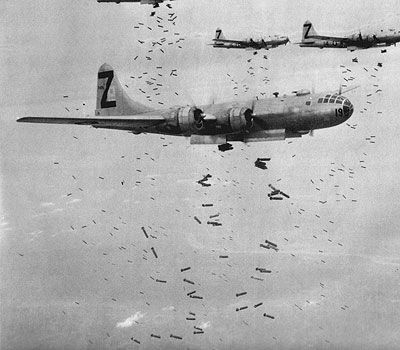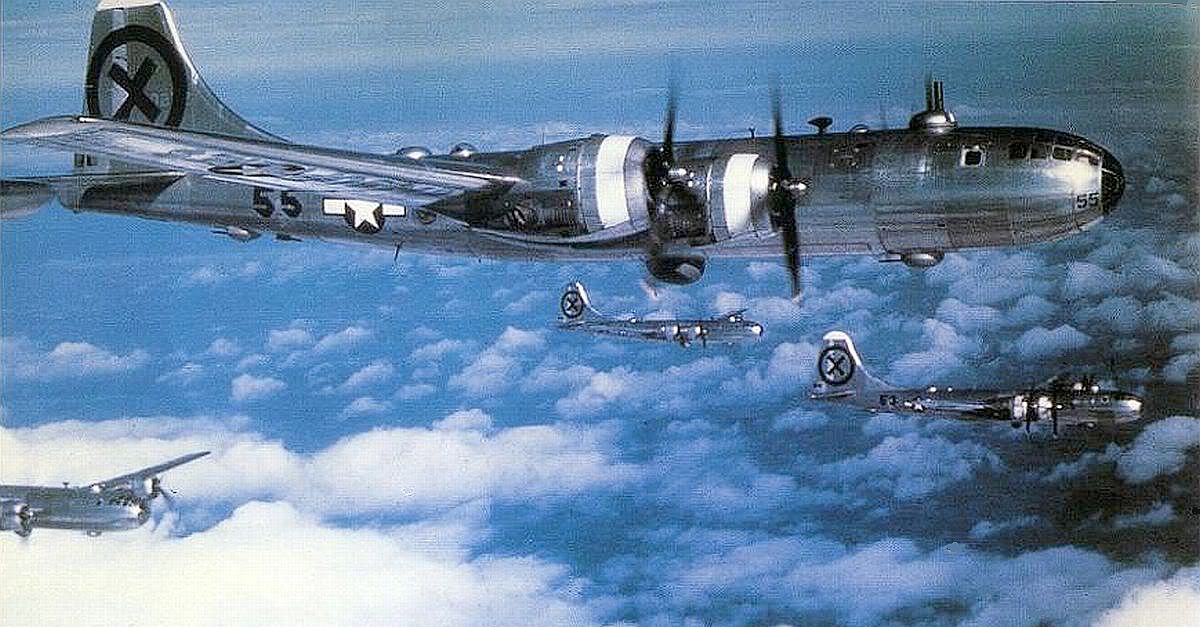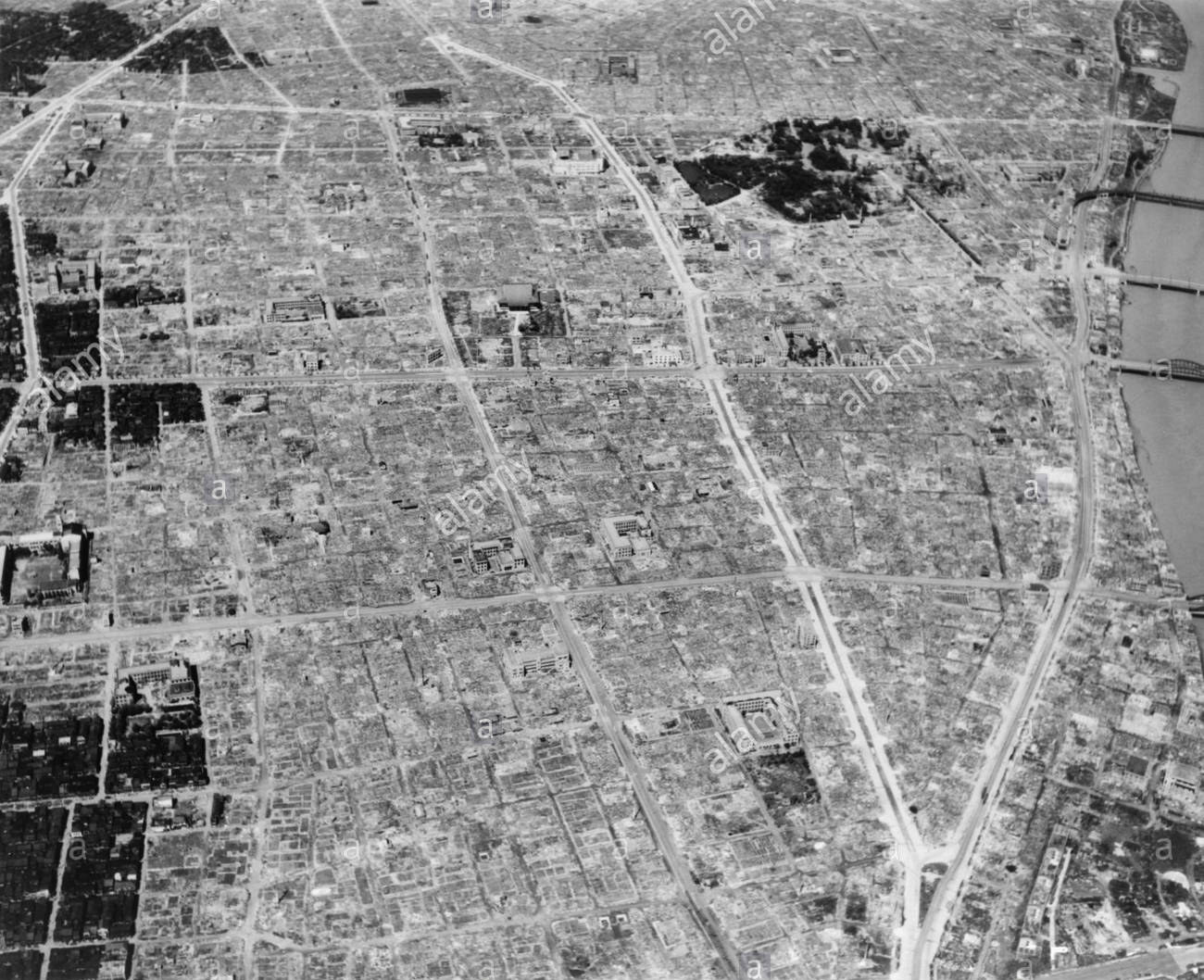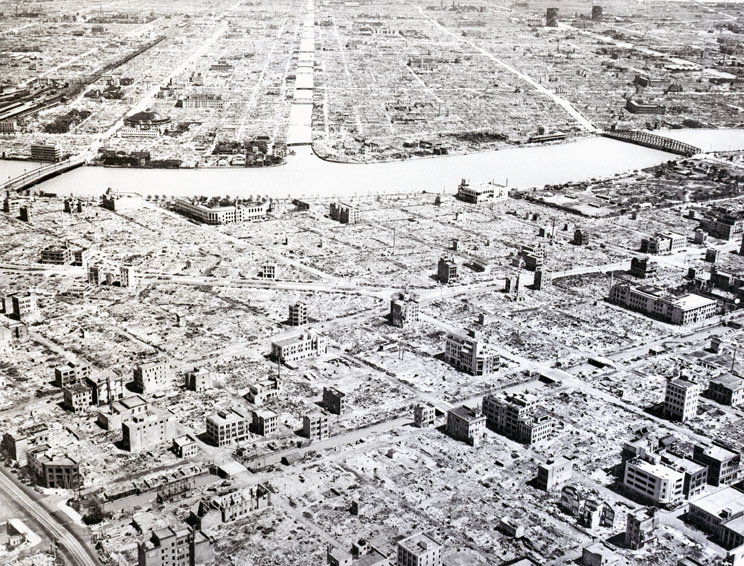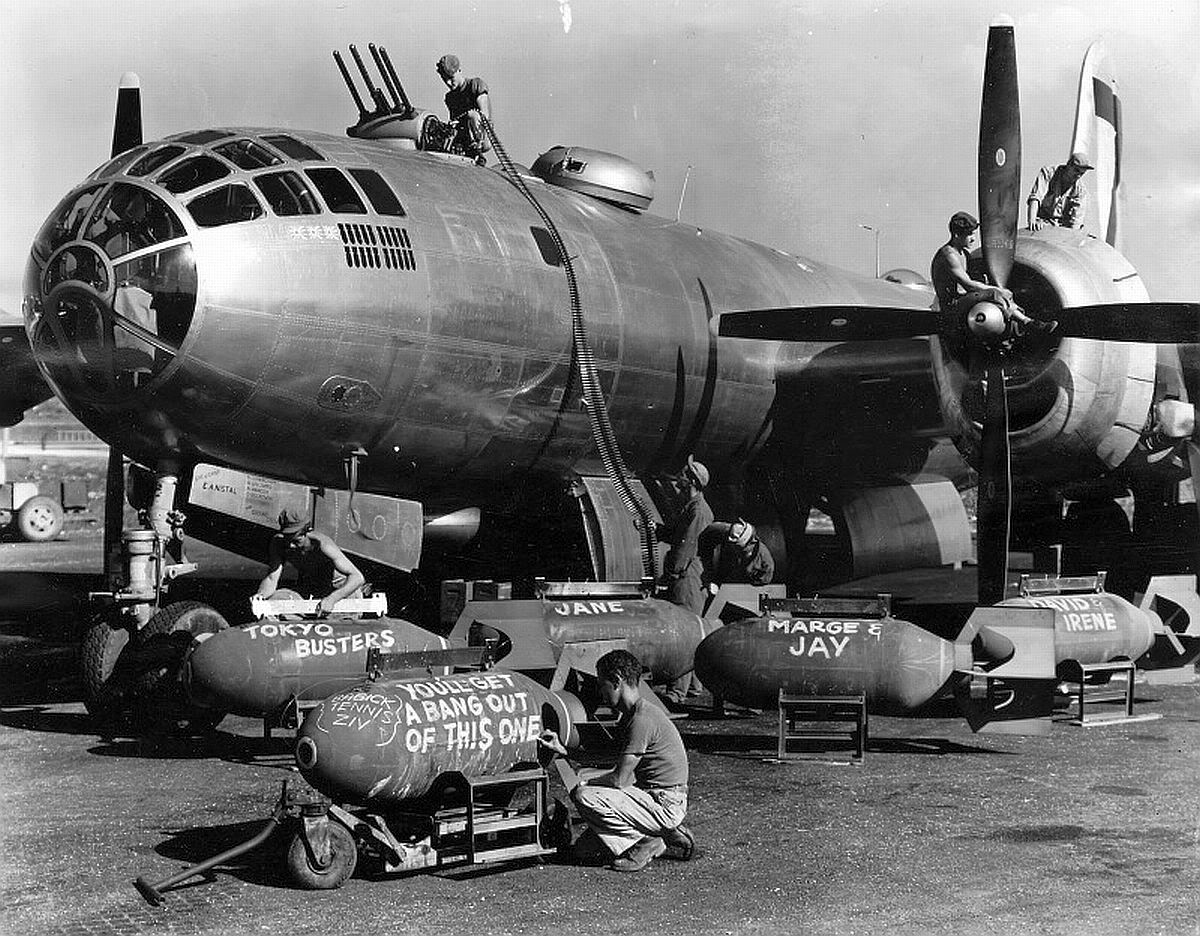
Early in the morning of March 10, as the Japanese slept in their low-rise, wooden homes, the first bombers over Tokyo started five sets of marking fires, smaller strikes for the rest of the bomber force to aim it.
Between 1:30 a.m. and 3:00 a.m. the main force of American B-29s unleashed 500,000 incendiary M-69 bombs, each one clustered in groups of 38 and weighing six pounds.
The clusters would separate during their descent and small parachutes would carry each bomblet to the ground.
This attack was code-named Operation Meetinghouse by the USAAF and is known as the Great Tokyo Air Raid in Japan. Bombs dropped from 279 Boeing B-29 Superfortress heavy bombers burned out much of eastern Tokyo.
More than 90,000 and possibly over 100,000 Japanese people were killed, mostly civilians, and one million were left homeless, making it the most destructive single air attack of World War II. The Japanese air and civil defenses proved largely inadequate; 14 American aircraft and 96 airmen were lost.
The operation during the early hours of March 10 was the first major firebombing raid against a Japanese city, and the USAAF units employed significantly different tactics from those used in precision raids, including bombing by night with the aircraft flying at low altitudes. The extensive destruction caused by the raid led to these tactics becoming standard for the USAAF’s B-29s until the end of the war.
The attack on Tokyo commenced at 12:08 am local time on March 10. Pathfinder bombers simultaneously approached the target area at right angles to each other. These bombers were manned by the 73d and 313th Bombardment Wings’ best crews. Their M47 bombs rapidly started fires in an X shape, which was used to direct the attacks for the remainder of the force. Each of XXI Bomber Command’s wings and their subordinate groups had been briefed to attack different areas within the X shape to ensure that the raid caused widespread damage.
As the fires expanded, the American bombers spread out to attack unaffected parts of the target area. Power’s B-29 circled Tokyo for 90 minutes, with a team of cartographers who were assigned to him mapping the spread of the fires.
Picture: Boeing B-29 over Japan
The raid lasted for approximately two hours and forty minutes. Visibility over Tokyo decreased over the course of the raid due to the extensive smoke over the city. This led some American aircraft to bomb parts of Tokyo well outside the target area. The heat from the fires also resulted in the final waves of aircraft experiencing heavy turbulence. Some American airmen also needed to use oxygen masks when the odor of burning flesh entered their aircraft.
A total of 279 B-29s attacked Tokyo, dropping 1,510 t of bombs. Another 19 Superfortresses which were unable to reach Tokyo struck targets of opportunity or targets of last resort. These aircraft turned back early due to mechanical problems or pilots deciding to abort the fight because they were afraid of being killed.
Tokyo’s defenders were expecting an attack, but did not detect the American force until it arrived over the city. The air defense units in the Kanto Plain area had been placed on alert, but the night fighter units were instructed to not sortie any aircraft until an incoming raid was detected. While picket boats spotted the attack force, poor radio reception meant that most of their reports were not received. Due to disorganization in the defense commands, little action was taken on the scattered reports which came in from the boats.
At around midnight on 9 March a small number of B-29s were detected near Katsuura, but were thought to be conducting routine reconnaissance flights. Subsequent sightings of B-29s flying at low levels were not taken seriously, and the Japanese radar stations focused on searching for American aircraft operating at their usual high altitudes. The first alarm that a raid was in progress was issued at 12:15 am, just after the B-29s began dropping bombs on Tokyo. The 10th Air Division sortied all of its available night interceptors, and the 1st Antiaircraft Division’s searchlight and antiaircraft units went into action.
As expected by LeMay, the defense of Tokyo was not effective. Many American units encountered considerable antiaircraft fire, but it was generally aimed at altitudes either above or below the bombers and reduced in intensity over time as gun positions were overrun by fires. Nevertheless, the Japanese gunners shot down 12 B-29s. A further 42 were damaged, of which two had to be written off. The Japanese fighters were ineffective; their pilots received no guidance from radar stations and the efforts of the antiaircraft gunners and fighter units were not coordinated.
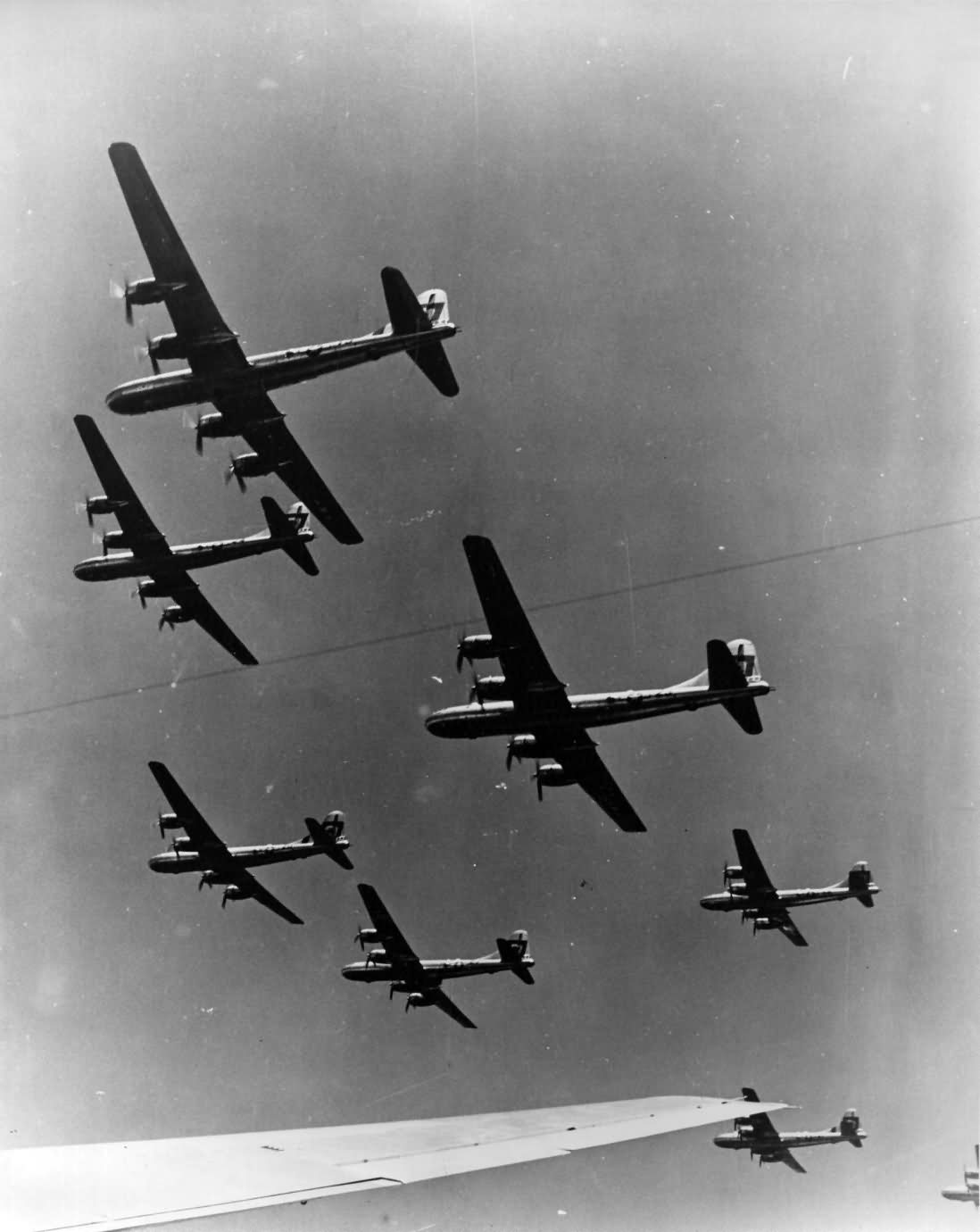
Picture: Boeing B-29 in formation
No B-29s were shot down by fighters, and the American airmen reported only 76 sightings of Japanese fighters and 40 attacks by them over the course of the raid. Several Japanese pilots were killed when their aircraft ran out of fuel and crashed. Five of the downed B-29s managed to ditch in the sea, and their crews were rescued by United States Navy submarines. American casualties were 96 airmen killed or missing, and 6 wounded or injured.
After the raid, 79,466 bodies were recovered and recorded. Many other bodies were not recovered, and the city’s director of health estimated that 83,600 people were killed and another 40,918 wounded. The Tokyo fire department put the casualties at 97,000 killed and 125,000 wounded, and the Tokyo Metropolitan Police Department believed that 124,711 people had been killed or wounded. After the war, the United States Strategic Bombing Survey estimated the casualties as 87,793 killed and 40,918 injured. The Survey also stated that the majority of the casualties were women, children and elderly people.
General LeMay and Arnold considered the operation to have been a significant success on the basis of reports made by the airmen involved and the extensive damage shown in photographs taken by reconnaissance aircraft.
Picture: Tokyo after bombing
IDEA address:
TFB3TkNe2yBq8HkQJBLZceG65kd6JP6J4v


